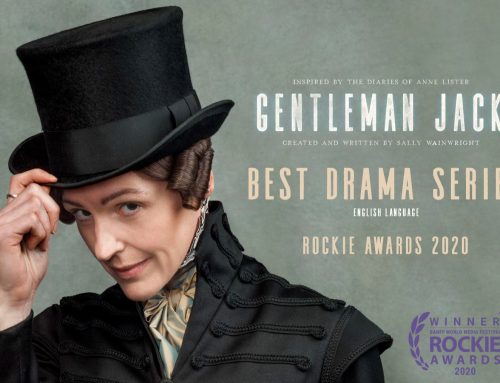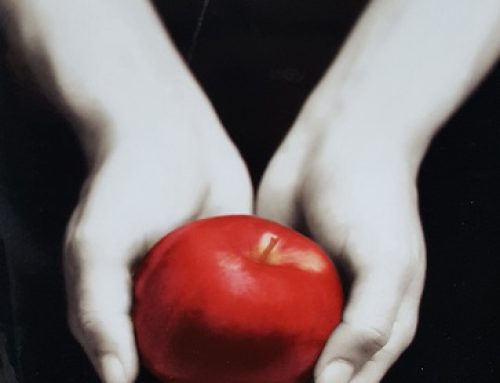by Renée Lukas
With news of an L Word reboot, it might be a good idea to revisit what happened the first time around—and talk frankly about it.
Nothing sent my lesbian heart aflutter more than the news that there would be a show devoted completely to lesbians, that I could finally watch a drama about lives and relationships that reflected my own life. For that, I will always have a soft spot for The L Word, in spite of how frustrating the show was.
That’s right. It was frustrating, even odd, to say the least. I went back and re-watched the first season, which I believe was probably the most coherent of all the seasons. Here’s a brief look at what went right—and wrong—with the first season, and the show in general.
What Was Good—and Bad—about The L Word
The good: It was the first time we lesbians saw ourselves in a regular TV show. For several decades before, we’ve had publishers like Bella Books devoted to telling our stories. It was quite another thing to see some of these stories dramatized on screen. And with that came the little truths, inside jokes and things we wondered about in the privacy of our homes, but didn’t know if anyone else was thinking.
One of my all-time favorite scenes was when Dana’s friends came together (Mission Impossible-style) to investigate whether or not her crush, Laura, was a lesbian. How many of us have struggled with the “Is she or isn’t she” question? It was so cute to have Dana’s more experienced lesbian friends testing their gaydar. How long were her fingernails? Short. But that could go either way because Laura is a chef. That was a classic scene. The character of Dana was very relatable for me because she had no gaydar (like me), was awkward, uncomfortable, and basically a social clutz.
The bad news: They killed off Dana to make a point about the prevalence of breast cancer. Too often, The L Word sought to make the show a commentary more than entertainment, which caused trouble in plot lines. Before you send me hate mail, I understand that because the show was groundbreaking, there was a sense of responsibility heaped on it that no one show could ever live up to. By this, I mean trying to represent ALL groups of people, all types of situations while including political statements threaded not-so-subtly throughout.
 The good: Bette and Tina. They had undeniable chemistry. If you didn’t think Bette was sexy in her black business suit, you might have to check your lesbi-o-meter. These two gave us a different perspective from the clubbing, late-night lesbians, as they prepared to have their first baby. With that decision, for Tina to become pregnant, they faced a ton of adversity, including from Bette’s own father. It would have been interesting to watch this play out more, with the two of them facing the world and trying to stay strong together in spite of it all, as many real-life lesbian couples have had to do. From the writers’ point of view, yes, keeping them in happy domesticity would have been a snooze, so they needed conflict. But for Bette and Tina, the outside world could have provided plenty of conflict.
The good: Bette and Tina. They had undeniable chemistry. If you didn’t think Bette was sexy in her black business suit, you might have to check your lesbi-o-meter. These two gave us a different perspective from the clubbing, late-night lesbians, as they prepared to have their first baby. With that decision, for Tina to become pregnant, they faced a ton of adversity, including from Bette’s own father. It would have been interesting to watch this play out more, with the two of them facing the world and trying to stay strong together in spite of it all, as many real-life lesbian couples have had to do. From the writers’ point of view, yes, keeping them in happy domesticity would have been a snooze, so they needed conflict. But for Bette and Tina, the outside world could have provided plenty of conflict.
The bad news: To provide more conflict, they wrote a typical cheating storyline for Bette. Okay, fine. This could have been a great way to ramp up conflict, but it happened too abruptly. Tina had just lost her baby, and suddenly Bette is bored and looking at other women! This goes to a larger problem I had with the show—characters stepping out of character and changing on a dime to suit something in the plot.
Note to all writers: Don’t do this. Don’t say, well I need THIS to happen, so I have to get there any way possible. You’ll be forced to twist and contort your characters and their motivations, and it will feel inorganic and forced.
The good: The show didn’t shy away from sex. It was depicted with unabashed, unapologetic, in-your-faceness. There was something so refreshing about that, especially living in a world, mostly anywhere that isn’t West Hollywood, where you felt judgmental eyes watching you if you held your girlfriend’s hand in public.
The bad news: This is totally subjective, of course, but there was too much sex. It appeared that all lesbians did was hook up—in bathrooms, on boats, in abandoned buildings, swimming pools. . . It gave many of us real-life lesbians a complex. Were we not doing it enough? When was the last time we’d done it in a pool or a car? Dang. What are we doing with our time?
An interesting storyline emerged about PDA (public display of affection for the acronym-challenged, like myself). Dana was about to get a contract as a spokeswoman athlete with Subaru. She had been closeted for professional, and personal, reasons. Laura, her new girlfriend, understandably wanted Dana to be more “out.” In Dana’s defense, though, Laura would hang all over her, kissing her in restaurants. For many of us, even straight couples doing that are annoying. So Laura was another character who went from sweet and subtle to a multi-tongued hydra, pushing Dana to practically having public sex—another example of a character contortion to lead to a plot change.
At the same time, The L Word’s preoccupation with sex included a preoccupation with lesbianness. My friends and I don’t sit around listening only to the Indigo Girls and talking about made-up concepts like “nipple confidence.” What the hell is that anyway? Understandably, the first major show about lesbians tried a little too hard, and the constant lesbian references sometimes seemed forced. I’m writing this in 2019, while trying to remember the perspective of the time The L Word came out in 2004. Maybe at that time our society needed to be hit over the head with a blunt object like this show. That might explain all the exposition about the HRC (Human Rights Campaign) and Dinah Shore.
The good: Alice and the gang. Alice was a fantastic comic relief character whose sardonic commentary on the other characters’ lives was hilarious. When Dana tried to coin a new expression for a hot woman, “crispy,” Alice immediately shot her down. Shane was a female Fonzie, able to seduce any woman in spite of a disastrous hairstyle that looked like she’d just been electrocuted. Her character was a clear reminder that this show was fiction; I’ve never known any woman who could get ANY woman—a lot maybe, but not every single one. It was like she was a superhero whose power was a half-asleep gaze that could immediately weaken all women, even supposedly heterosexual married women. (I wouldn’t have minded that power during my coming-out years.)
The bad news: The gang always seemed so hip, it made the rest of us feel like losers. This isn’t necessarily a bad thing since the point of a good show is to escape. But the gang of women in The L Word spent so much time clubbing, yet rarely did you see anyone hunched over a toilet, hung over the next day. And with so much drinking, they still managed to have mostly trim waistlines. Not a beer belly in sight. Also, the gang did everything together, even crowded around when Tina was conceiving her child with her legs up in the air. I’ve had close friends, but that was a little too close.
The good: Marina. Notice I’ve saved this storyline for last! And for good reason. While the annoyance of the Jenny character has been well-documented, I won’t beat that dead horse. But here’s the thing: the Jenny and Marina storyline could have been awesome. In fact, it was among my favorites during the first season. A woman moves out to L.A. to live with her boyfriend and falls head over heels for a mysterious intellectual with a French accent—and she happens to be a woman. This story was rich with angst and conflict—it practically wrote itself. Alas. . .
The bad news: This was another storyline that got twisted, weird, and basically crazy. Jenny began as a character whose journey was familiar to many. I actually cared about what decisions she would make. Then she spiraled into someone so manipulative and repugnant, I found myself cheering on her boyfriend Tim for throwing her belongings out on the lawn. If the writers were going for a mash-up of extreme emotional reactions, they certainly got that with Jenny.
 Then there was Marina. She was either bi-polar or different writers wrote her part at different times. She began as the siren you’d fall in love with. Then she morphed into someone whose girlfriend, you know, Francesca, the one she never mentioned, just happened to be returning from some long gig for her job. You know, Francesca? Didn’t she mention her? Marina, who so longed to be with Jenny every spare second—even at work in a bathroom stall—was suddenly a character saying, “ciao,” as she waved to Jenny with an oblivious smile and her arm hooked around Francesca’s waist. Next thing you know, she and Francesca are having Jenny over for dinner, and Marina can’t believe that Jenny doesn’t understand the depth of her feelings for her! Hot, cold, hot. . . the woman gave me whiplash.
Then there was Marina. She was either bi-polar or different writers wrote her part at different times. She began as the siren you’d fall in love with. Then she morphed into someone whose girlfriend, you know, Francesca, the one she never mentioned, just happened to be returning from some long gig for her job. You know, Francesca? Didn’t she mention her? Marina, who so longed to be with Jenny every spare second—even at work in a bathroom stall—was suddenly a character saying, “ciao,” as she waved to Jenny with an oblivious smile and her arm hooked around Francesca’s waist. Next thing you know, she and Francesca are having Jenny over for dinner, and Marina can’t believe that Jenny doesn’t understand the depth of her feelings for her! Hot, cold, hot. . . the woman gave me whiplash.
And Tim. Let’s not forget the mostly shirtless guy plopped in the middle of a lesbian drama. I remember when I first watched the show, I wondered why a show about lesbians still needed to feature so much straight sex. Then I read somewhere that they weren’t sure there would be enough of an audience, so it was an attempt to bring in gay men. If that was true, just no. Gay guys were watching Queer As Folk anyway. If you do a show about lesbians, make it about lesbians. There are plenty of, in fact most all, shows that feature men.
In fact, The L Word had a strange relationship with male characters. The lesbian-identified man, Lisa, was ridiculous. Imagine a man trying to use a dildo instead of his own penis during sex. Maybe I’m missing the point. Was he a metaphor for something? Was it an effort to be more inclusive? I don’t know. Now that we live in a more inclusive world, there are positives and negatives to the creative process. And I worry for the reboot. Why is it the sole responsibility of The L Word to represent everyone? The L Word took a lot of heat for showing mostly femme women, with butches only in the background in bar scenes. They took heat from the transgender community, and included a storyline about a female-to-male pregnant transgender man. But they couldn’t do it all.
Call me crazy, but let’s have more shows that feature underrepresented characters so that it doesn’t rest all on one show.
Potential Problems with The L Word Reboot
You can’t be all things to all people. If a single show tries to tackle everything, the organic stories, and characters, will suffer. Unfortunately, there haven’t been follow-ups of predominantly lesbian-themed shows, even on cable—that’s 15 years ago—since The L Word premiered. That’s not only sad, but it doesn’t bode well that the same kind of pressure won’t be placed on the reboot as well.
I hope the writers of the reboot will try to stay on course without veering off into long, mushroom-smoking tangents, taking away characters who could have richly dramatic storylines, and who knows, maybe giving us a power couple we can count on to get back together even when outer forces pull them apart. That’s my wish list for the new L Word.
Having said all of this, I am, and will always be, grateful that The L Word came into existence, and that it is going to be rebooted. For more up-to-date news about LGBT-related media, check out Bella’s media channel. Also keep checking this blog for everything film, television and the writing life.




